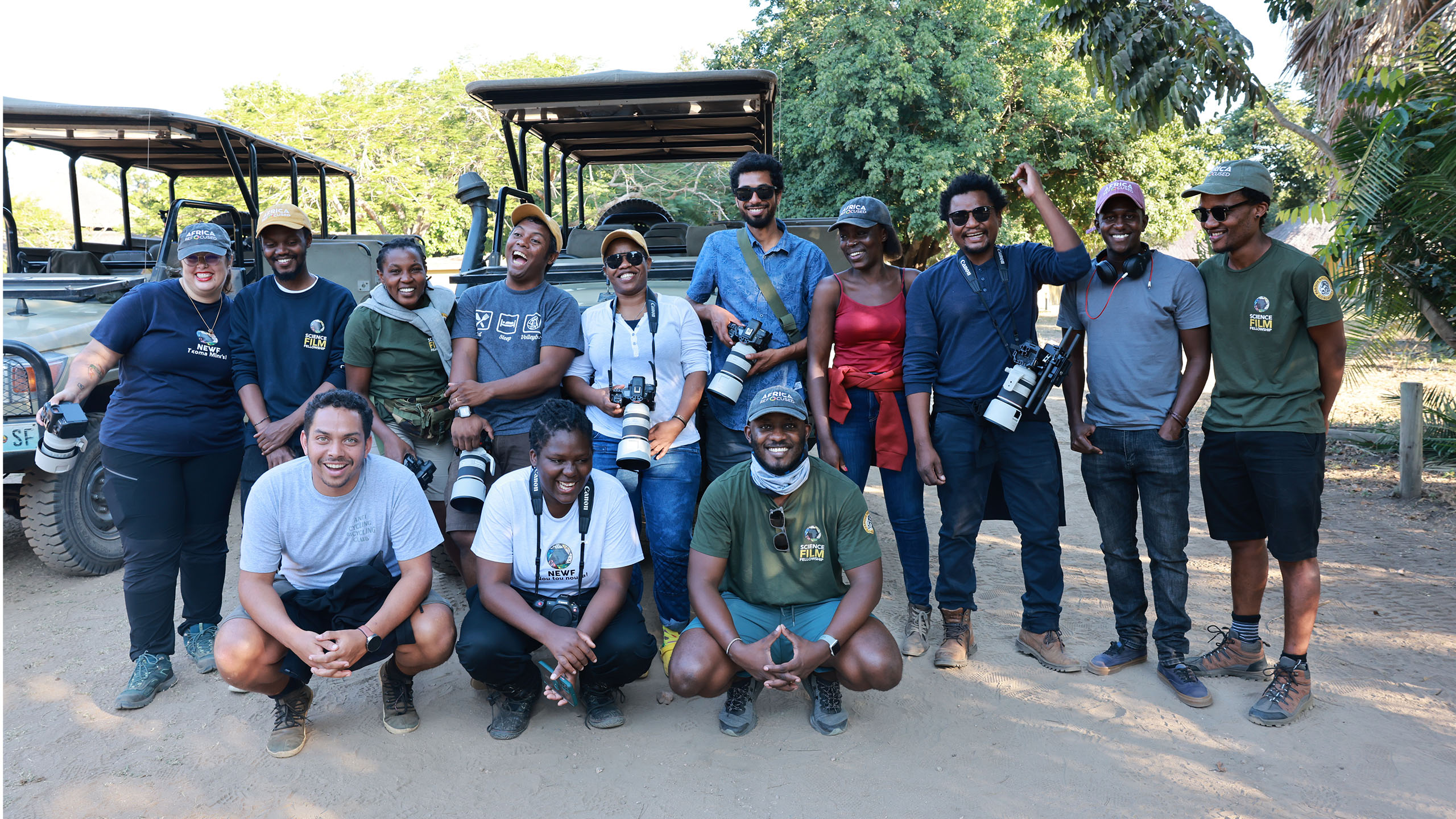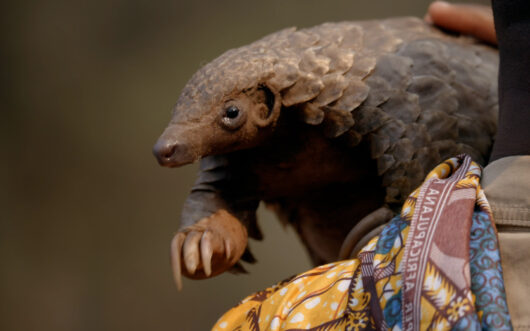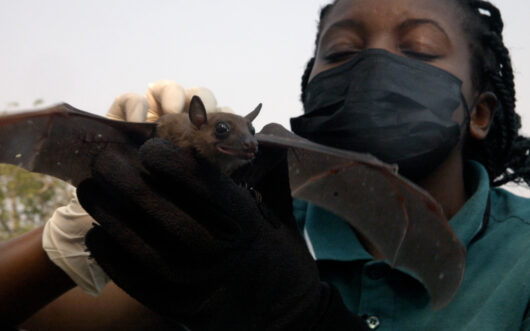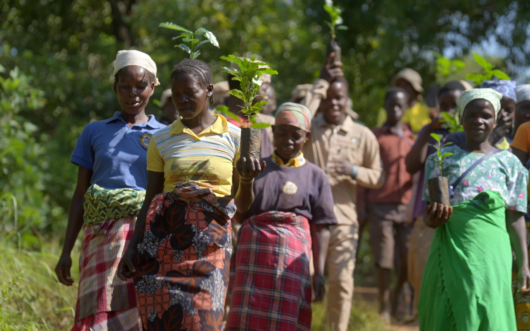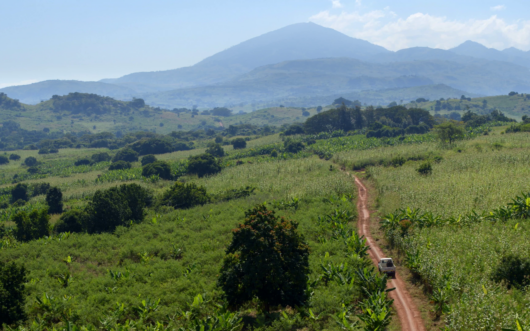Two Wild Hope episodes filmed in Gorongosa National Park and produced by NEWF African Science Film Fellows provide a model for empowering local film crews.
When Noel Kok and Pragna Parsotam-Kok founded the Nature, Environment and Wildlife Filmmakers initiative (NEWF) in 2017, they had a vision: Train and empower more African filmmakers to tell stories about African wildlife.
“We as Black Africans are mostly portrayed as the poacher, the pirate, the ranger, the guide. We are so much more than that,” Kok says. “And how do you change the story? You change the storyteller.”
Now, two films created by NEWF fellows are making their debut on Wild Hope. “Pangolin Protectors” tells the story of conservationists working at a pangolin rehabilitation center at Gorongosa National Park, while “Guano Gold” follows a young African scientist whose research is setting the stage for sustainable bat guano harvest just outside the park.
“One of the goals for Wild Hope is to empower local filmmakers to tell local stories,” says Jared Lipworth, Head of Studio at HHMI Tangled Bank Studios. “When you’re trying to tell intimate stories about a place and its people, that local perspective is so important. These two pieces are models for what that process can look like, and we hope to do a lot more like them going forward.”
Creating a Space for African Filmmakers to Thrive
NEWF launched in 2017 as a yearly event bringing together African filmmakers, storytellers, conservationists, and scientists from around the continent. It was the first forum of its kind. But the vision soon expanded. “Quickly we realized that the challenges were so institutional that we could not just have an annual event,” Kok says.
Today, just seven years later, NEWF has made a name for itself as an invaluable resource for African conservationists and filmmakers in training. The initiative now has a permanent headquarters in Durban, South Africa and runs multiple trainings a year. They range from diving certifications intended to expand the number of African underwater filmmakers, to cinematography workshops that supply filmmakers with professional gear.
More than 250 people from 32 African countries now count themselves as NEWF fellows, forming a professional network that stretches across the continent. “We’ve had phenomenal growth,” Kok says. “We saw as this community, we became so much stronger together.”
Tangled Bank Studios and NEWF: A Powerful Collaboration
HHMI Tangled Bank Studios teamed up with NEWF about four years ago, when Kok approached the studio about supporting an all-woman science film fellowship. He was drawn to the studio because it shared a similar vision of telling science-backed stories that make an impact, he says.
Tangled Bank loved the idea, providing mentorship and funding for 10 women filmmakers who participated in the virtual, year-long “Wild Women” fellowship in 2020. It went so well that NEWF and Tangled Bank joined forces again for second media lab — this time in the field, in Mozambique’s Gorongosa National Park.
The location was chosen because Gorongosa provided something unique: access to conservation biologists completing a field-based master’s degree program. Gorongosa National Park is the only place in Mozambique that offers a master’s degree in conservation biology; it is the only master’s program in the world that takes place entirely in a national park. “Very few places in Africa offer the opportunity where you can find twelve African scientists actually in the field, in a park, doing their research,” Kok says.
In 2023, a cohort of NEWF fellows came to the park for the African Science Film Fellowship and were paired with twelve African scientists completing their master’s research fieldwork. The fellows profiled the scientists they were paired with in short videos. Then, they were split into three groups and given a second task: Film a story of conservation in action in Gorongosa National Park, and pitch it as a Wild Hope episode.
From Fellowship Project to Wild Hope Episode
The Wild Hope episodes “Guano Gold” and “Pangolin Protectors” are the result of this effort. The filmmaking process was the first time many of the fellows had the opportunity to tell the stories of scientists in the field using professional equipment. And taking those films from fellowship project to Wild Hope episode offered the fellows invaluable experience working professionally for a client.
It was “an amazing experience,” says Samira Vera-Cruz, a fellow from Cape Verde who worked on “Guano Gold.” Her favorite part was getting to work with an all-African, all-female team of filmmakers — a rare opportunity in filmmaking. The team pushed themselves to overcome the challenges of filming around Gorongosa National Park, which involved walking 10 kilometers a day over rocky terrain to reach remote study sites.
“This kind of fellowship and this kind of partnership between NEWF and HHMI Tangled Bank Studios really provided a unique opportunity for filmmakers to actually come together and have that experience in the field,” Vera-Cruz says.
To help them make the most of that on-the-ground experience, all the fellows also got professional-level camera equipment. They were able to use this throughout the fellowship and take it with them when the project ended. That alone will benefit the fellows for years to come, says Augusto Bila, who was part of the “Pangolin Protectors” team. The gift of equipment gives the fellows a professional edge, making it easier for them to shoot their own films or get hired by other crews.
“We are all exposed to different stories, good stories,” he says. “When you get the chance to have the gear you need to tell a good story, it gives you a step up.”
The fellows also praised the mentorship they received from NEWF and HHMI Tangled Bank Studios, helping them to hone their pitching, shooting, storytelling, and video editing skills. For months, the teams received feedback and insights that helped them craft their narrative. While a third film created through the fellowship did not become a Wild Hope story, that team received the support and mentorship to complete it.
“I’m a different Samira than I was one year ago,” Vera-Cruz says. “A lot braver, a lot more sure of my skills, more eager to bring experiences of hope onto the screen.”
Taking Lessons Forward
While these two stories from Gorongosa National Park are the first collaboration between Wild Hope and NEWF, they won’t be the last. Several alumni of the African Science Film Fellowship are already filming an episode of Wild Hope season 3 in South Africa.
“NEWF is doing such a phenomenal job training and mentoring local talent, and building a strong community of science and wildlife filmmakers across Africa,” says Lipworth. “Wild Hope gives these filmmakers real-world experience and a global outlet to showcase their work, and the series benefits from their skills and perspective. It’s a win-win for everyone.”
“Pangolin Protectors” and “Guano Gold” are also paving the way for more Wild Hope stories produced by — and featuring — local experts around the world. In Wild Hope season 3, five episodes will be filmed by local crews.
“We’re trying to build capacity for smart science filmmaking from different voices and all different places,” says Lipworth, “and then make sure there is a place for these stories to be seen.”
